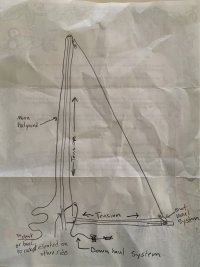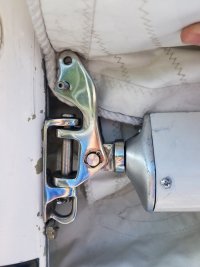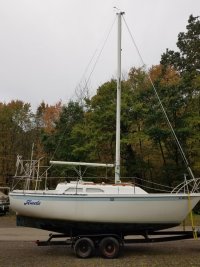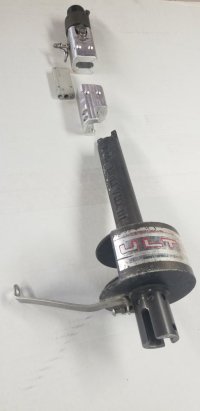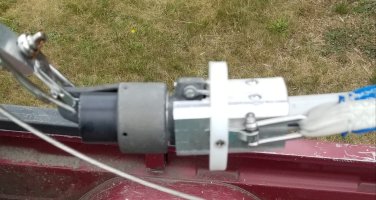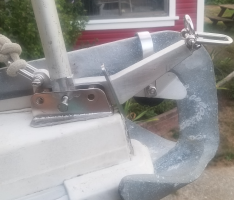Adventure4Me
Junior Member
I'm a bit embarrassed to post what may seem a simple question, but I have questions on how the gooseneck should be properly(or improperly!) attached to the mast while sailing.
Some backstory: I acquired an Ericson 25 (1973 model, I think), in the spring of 2022, for the cost of hauling it out of a lady's driveway, where it had been housing wildlife and sinking into the pavement for over a decade. She advised me that it had spent the previous decade sinking into a farmer's field before her then young son brought it home. The trailer was bent, broken and stripped, and the boat was missing hatches, hardware and much of what was left was broken. I had been looking for a boat like this for several years, and felt that this was the one that I wanted to sail. I've been able to recreate or repair most of the damage and have had it out on a nearby mountain lake several times this year. (I must say: it's an excellent performer, as I suspected it would be!)
I've only been on a few sailboats and don't have any close by to take reference notes off of, but have re-rigged the majority of the system. One thing that puzzles me is the gooseneck attachment to the mast. The swivelling gooseneck that is attached to the boom has two holes at the bottom and the mast has a braced eye strap near the lower end that I've been pinning to the gooseneck. It's worked for raising the mast, but holds the boom in a very low position on the mast. Besides not allowing the mainsail to take it's optimum shape, it bunches up the sheet and blocks to the traveler. It seems to me that there should be some sort of fixment to hold the boom up as high as the painted mark on the mast and not allow it to slide up or down when under sail. It would need to be secure, as it's critical to keep the boom and gooseneck from sliding out of the slot especially when raising the mast. I've spent hours googling the web and while there's some really detailed and informative pages out there, I haven't been able to find what I'm looking for. Does anyone have a picture of how this is attached? An obvious option for me would be to fabricate an aluminum bar to pin to the gooseneck and the other end to the eye strap on the mast. Is this a bad idea? Is there a dissadvantage to having the boom at a fixed height while sailing?
Thanks for any and all illuminations on this matter.
Gerald LaPointe
British Columbia
Some backstory: I acquired an Ericson 25 (1973 model, I think), in the spring of 2022, for the cost of hauling it out of a lady's driveway, where it had been housing wildlife and sinking into the pavement for over a decade. She advised me that it had spent the previous decade sinking into a farmer's field before her then young son brought it home. The trailer was bent, broken and stripped, and the boat was missing hatches, hardware and much of what was left was broken. I had been looking for a boat like this for several years, and felt that this was the one that I wanted to sail. I've been able to recreate or repair most of the damage and have had it out on a nearby mountain lake several times this year. (I must say: it's an excellent performer, as I suspected it would be!)
I've only been on a few sailboats and don't have any close by to take reference notes off of, but have re-rigged the majority of the system. One thing that puzzles me is the gooseneck attachment to the mast. The swivelling gooseneck that is attached to the boom has two holes at the bottom and the mast has a braced eye strap near the lower end that I've been pinning to the gooseneck. It's worked for raising the mast, but holds the boom in a very low position on the mast. Besides not allowing the mainsail to take it's optimum shape, it bunches up the sheet and blocks to the traveler. It seems to me that there should be some sort of fixment to hold the boom up as high as the painted mark on the mast and not allow it to slide up or down when under sail. It would need to be secure, as it's critical to keep the boom and gooseneck from sliding out of the slot especially when raising the mast. I've spent hours googling the web and while there's some really detailed and informative pages out there, I haven't been able to find what I'm looking for. Does anyone have a picture of how this is attached? An obvious option for me would be to fabricate an aluminum bar to pin to the gooseneck and the other end to the eye strap on the mast. Is this a bad idea? Is there a dissadvantage to having the boom at a fixed height while sailing?
Thanks for any and all illuminations on this matter.
Gerald LaPointe
British Columbia

